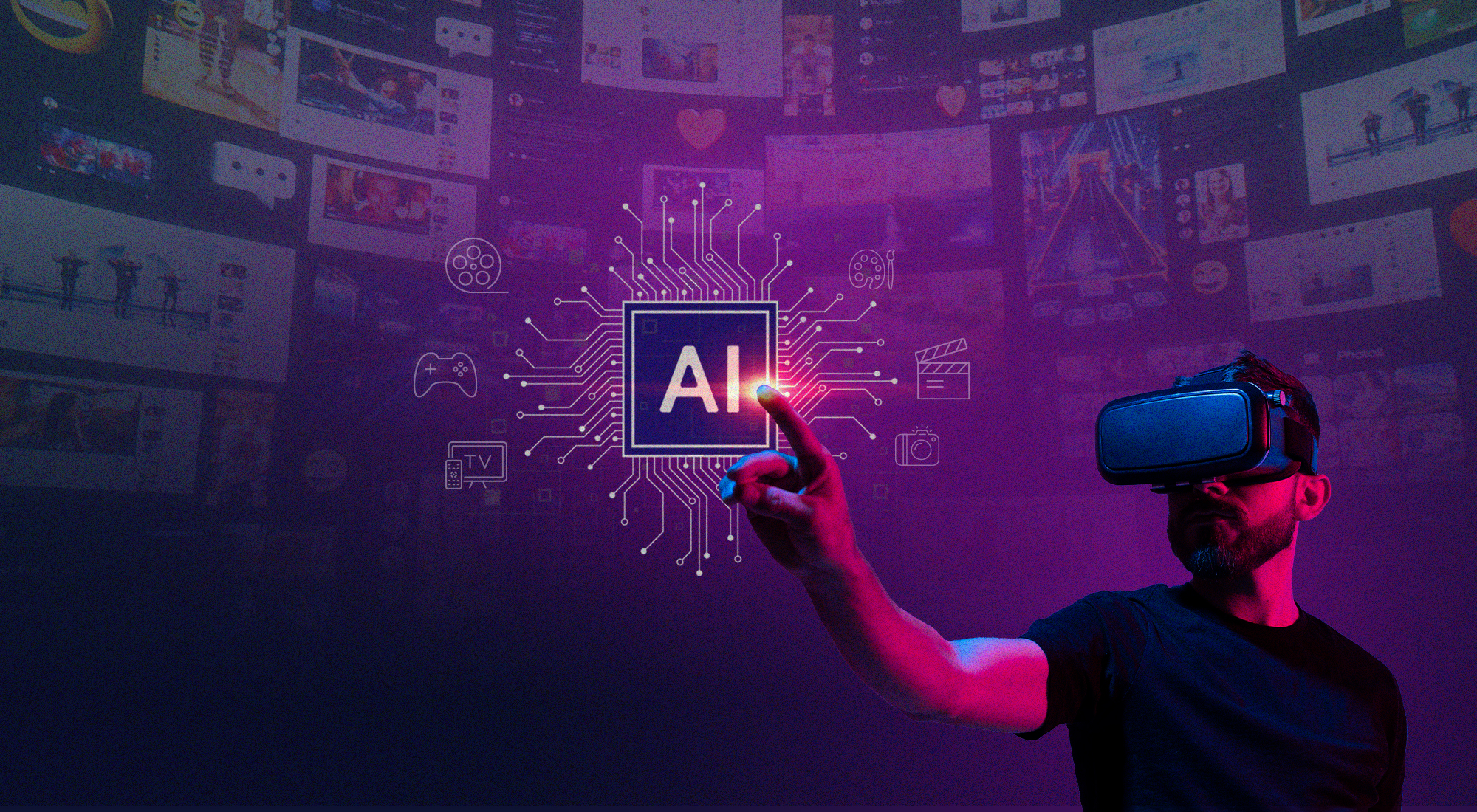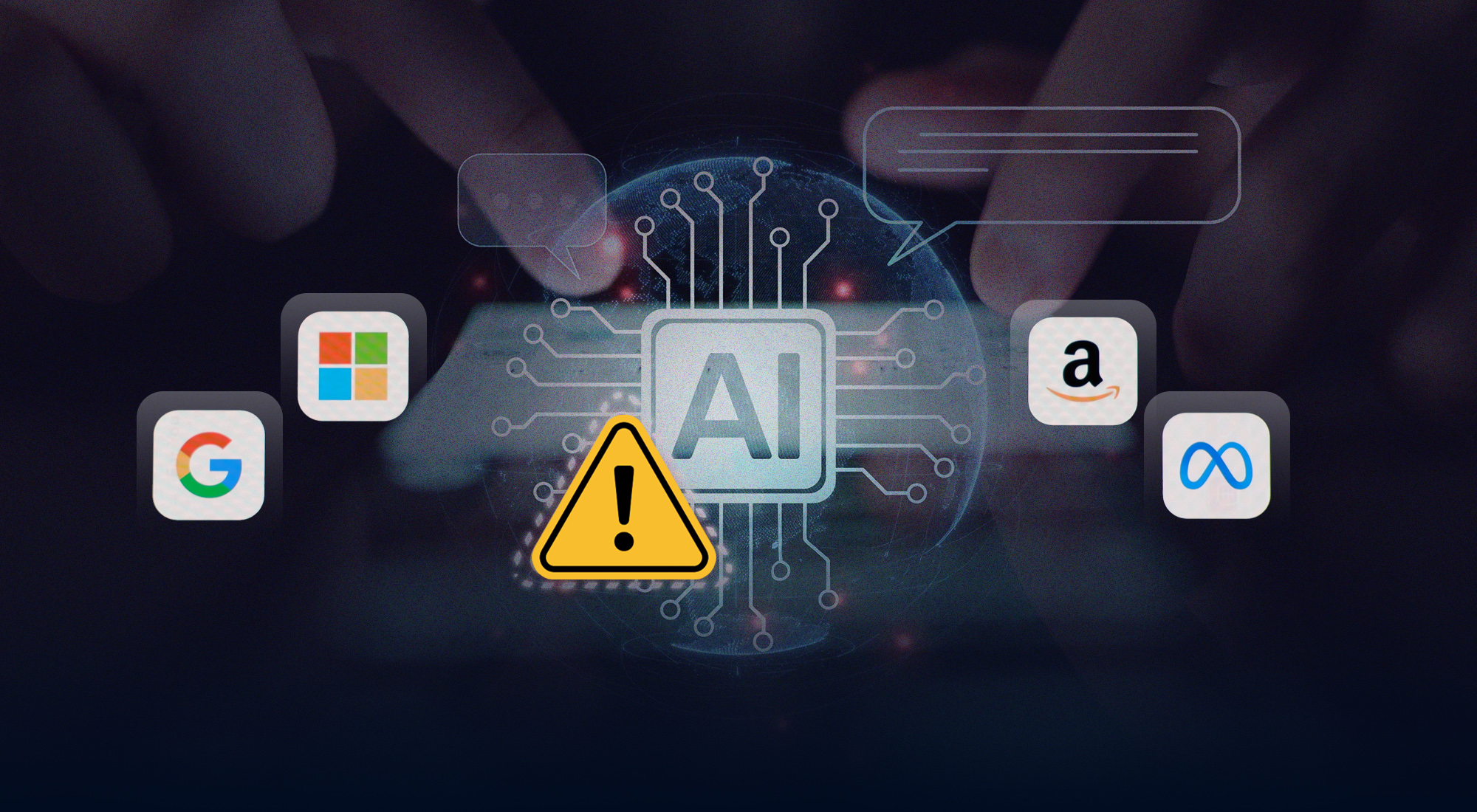The integration of AI into the entertainment industry is revolutionizing content creation, personalization, and audience engagement. From AI-generated music and gaming to hyper-realistic visual effects, the technology is reshaping how audiences interact with media. While global investments in AI infrastructure fuel innovation, ethical concerns surrounding data privacy, intellectual property, and regulatory compliance continue to grow. Emerging technologies, such as brainwave analysis and biometric tracking used in gaming, virtual reality, and interactive media, introduce new ethical challenges related to cognitive privacy and data security. As AI systems process vast amounts of user and proprietary data, industries must navigate a complex landscape of regulatory frameworks and emerging challenges.
The entertainment sector sits at the intersection of creativity and technology, where innovation must be balanced with responsible data use and legal safeguards. While tech companies race to capture consumer demand and governments increase local investments in AI-driven infrastructure, debates around content ownership, algorithmic transparency, and digital rights protection continue to intensify. This insight explores the transformative potential of AI in entertainment, examines evolving legal and regulatory frameworks for data protection, explores emerging data protection challenges, and discusses strategies to foster innovation while maintaining ethical and regulatory compliance in an increasingly AI-powered world.
The Role of AI in Entertainment
From automating creative processes to enhancing audience engagement, AI is revolutionizing entertainment by transforming how content is created, personalized, and experienced. Streaming services and content platforms rely on AI to enhance user experience through personalized recommendations. Beyond content suggestions, AI also powers interactive audience engagement strategies. Chatbots, virtual influencers, and AI-driven social media campaigns allow brands and entertainment companies to create more dynamic interactions with their audiences. As more AI-powered streaming services expand, cloud computing and AI model training require vast amounts of energy, especially for services like Netflix, YouTube, and Disney+.
The gaming industry is also experiencing a revolution driven by AI advancements. Machine Learning (ML) and neural networks enable adaptive gameplay experiences, where AI analyzes player behavior and adjusts game difficulty, scenarios, or even storylines in real time to create more immersive and unpredictable environments. Non-player characters (NPCs) are becoming increasingly intelligent, thanks to AI, and NPCs now react dynamically to player actions, adapting their behavior and dialogue accordingly.
Creative content is experiencing one of the most profound shifts due to AI, as platforms and tools now enable users to generate lyrics, audio, and scripts with just a simple prompt. From automated songwriting assistants to AI-powered voice synthesis and script generators, technology is reshaping how content is created, customized, and distributed. Large media companies are increasingly integrating AI-driven virtual production techniques, visual effects, and CGI, revolutionizing content creation. AI enhances real-time rendering, automates complex visual tasks, and generates hyper-realistic environments, pushing the boundaries of storytelling and immersive digital experiences.
In 2024, AI accounted for 44% of US VC-backed investments, up from 25% in 2023.[1] Despite this rapid growth, AI’s overall penetration across industries remains relatively low compared to the banking sector, where adoption is most widespread. However, with a projected compound annual growth rate of 26%, AI-driven use cases are expected to see significant expansion by 2030.[2]
Global Investments in AI Infrastructure
The rapid advancement of AI and large language models (LLMs) requires a strong technological backbone, prompting governments and corporations worldwide to invest heavily in AI infrastructure. U.S. President Donald Trump announced in January a US$500 billion investment to fund infrastructure for AI that will support a joint venture among Open AI, Oracle and SoftBank to continue creating more jobs in the U.S. and building data centers in Texas and in other places.[3] Saudi Arabia is accelerating its AI ambitions through significant investments and strategic partnerships. In February 2025, the Kingdom committed US$1.5 billion to U.S.-based AI chipmaker Groq, designing chips specifically to run LLMs.[4] France is emerging as a significant player in the AI landscape, attracting substantial investments to bolster its infrastructure. In February 2025, Canadian investment firm Brookfield Asset Management announced a €20 billion commitment to develop AI infrastructure in France by 2030.[5] This investment includes constructing a massive data center in Cambrai.
Recognizing the growing demand for AI and cloud services, Microsoft announced in January 2025 a US$3 billion investment to expand its cloud and AI infrastructure in India over the next two years. In February 2025, the European Union (EU) unveiled the “InvestAI initiative,” channeling €200 billion into AI investments.[6] The initiative focuses on constructing gigafactories necessary for training complex AI models within the EU. In September 2024, MGX, BlackRock, and Microsoft announced the Global AI Infrastructure Investment Partnership (GAIIP), a US$30 billion fund dedicated to constructing data centers and energy infrastructure to enhance AI supply chains, with the potential to mobilize up to US$100 billion in total investments.[7] In February 2025, the UAE and France unveiled plans to invest between €30 billion and €50 billion to establish Europe’s largest AI data center in France.[8] These investments reflect a global race to establish robust AI ecosystems, ensuring that cutting-edge technologies can be developed, scaled, and deployed within a well-supported infrastructure. As AI continues to evolve, these strategic efforts will play a crucial role in shaping the future of AI worldwide.
Over the past year, the entertainment industry has witnessed significant advancements driven by AI innovation. A noteworthy investment in this space is Promise, a studio backed by Andreessen Horowitz, which is dedicated to producing films and series using generative AI tools. The studio is developing proprietary production software that is set to revolutionize filmmaking and storytelling by integrating AI-driven processes at every stage of production. Additionally, Autodesk, a leader in 3D design and engineering software, strengthened its position in AI-powered content creation by acquiring Wonder Dynamics. This company specializes in AI-based visual effects (VFX) and computer graphics, including character animation and compositing, enabling more efficient production workflows while reducing costs. These advancements highlight how AI is reshaping the entertainment industry, enhancing creativity while optimizing efficiency.
Data Protection Challenges in AI-Driven Entertainment
The rise of AI in entertainment has led to an unprecedented reliance on vast amounts of personal, behavioral, and proprietary data, raising concerns about privacy, security, and ownership. AI-driven tools used for content creation, audience engagement, and recommendation algorithms often process sensitive user data, making them susceptible to misuse, unauthorized access, and legal ambiguity.
One of the primary concerns is the collection and use of personal data by streaming platforms, social media, and interactive entertainment services. AI models continuously analyze user behavior to refine recommendations, personalize experiences, and even generate tailored content. However, the lack of transparency in data collection and processing raises privacy concerns, particularly as AI algorithms operate on massive datasets, often without explicit user consent. Regulatory bodies, such as the EU’s General Data Protection Regulation (GDPR) and the California Consumer Privacy Act (CCPA), have introduced strict compliance requirements, but AI’s rapid evolution often outpaces enforcement efforts.
Another significant issue is intellectual property (IP) rights and AI-generated content. AI models trained on vast amounts of copyrighted material, including film scripts, music, and digital art, often lack clear attribution mechanisms. Lawsuits like the Suno and Udio cases, where major record labels including Universal Music Group, Sony Music Entertainment, and Warner Music Group sued AI music generators for training on copyrighted songs without permission, highlight the legal uncertainty surrounding AI’s use of proprietary data. The suits allege that these companies used copyrighted music without authorization to train their AI models, enabling the generation of new songs based on user prompts. Similarly, AI-generated screenplays and animations, many trained on existing works, raise questions about ownership, fair use, and licensing agreements.
Deepfake technology and synthetic media also introduce serious data protection risks, as well. AI-generated replicas of actors, musicians, and public figures, sometimes used without consent, have led to high-profile legal battles. In response, laws like Tennessee’s ELVIS Act have been enacted to protect individuals from unauthorized AI-generated likenesses, ensuring that actors and artists retain control over their digital identities. However, challenges persist in enforcement, as AI-generated deepfakes can be difficult to trace and regulate, especially when content spreads rapidly online.
Even further, the integration of AI in the entertainment industry is increasingly utilizing advanced technologies to analyze human emotions and reactions. This involves collecting data from brainwaves and other physiological signals through wearable devices, raising significant data protection and privacy concerns. Meta, the parent company of Facebook, has developed non-invasive brain-to-text technology capable of decoding unspoken sentences from brain signals using magnetoencephalography (MEG) scanners. While this technology aims to assist individuals with neurological impairments, it also raises ethical concerns regarding cognitive privacy and the potential misuse of brain data. Neurable, a Boston-based company, has introduced the MW75 Neuro, a pair of smart headphones equipped with electroencephalography (EEG) sensors that monitor brain activity to assess focus levels. Emotiv offers wearable EEG devices designed to monitor brain activity for applications ranging from mental wellness to virtual reality experiences.
Additionally, the storage and security of AI training data pose cybersecurity threats. Large datasets used to train AI in film, gaming, and virtual production are often highly valuable and susceptible to breaches. In cases where AI systems rely on user-generated data for ML improvements, improper handling can lead to identity theft, financial fraud, and unauthorized surveillance.
As AI-generated media becomes mainstream, the industry faces growing pressure to develop standardized frameworks for data protection, privacy compliance, and ethical AI use. Collaboration between regulators, technology companies, and creative professionals will be essential to strike a balance between innovation and protecting personal and proprietary data in the evolving entertainment landscape.
Regulatory and Ethical Frameworks
The increasing use of AI in entertainment has prompted global efforts to establish regulatory and ethical frameworks that balance innovation with the protection of intellectual property (IP), personal data, and digital identities. Governments and industry leaders are working to address concerns surrounding AI-generated content, deepfake technology, and automated media production, ensuring that creators and performers maintain control over their work.
One of the most pressing issues is the unauthorized use of performers’ likenesses and voices. In 2024, SAG-AFTRA (Screen Actors Guild, American Federation of Television and Radio Artists) secured a groundbreaking agreement with major record labels, including Warner Music Group and Sony Music, ensuring that artists must provide consent and receive compensation before AI-generated replicas of their voices can be commercially released.
In March 2024, Tennessee passed the ELVIS Act to protect individuals, especially in entertainment, from unauthorized AI-generated replicas of their voice and image.[9] The EU’s Artificial Intelligence Act (AI Act), adopted by the European Parliament in March 2024, classifies AI applications based on risk levels—unacceptable, high, limited, and minimal. For instance, the Colorado Senate unanimously passed legislation to establish privacy rights for human brainwaves, marking a pioneering step in neurodata protection.
In the Asia-Pacific region, approaches to AI regulation and data protection vary. Singapore, for instance, has adopted a “light touch” regulatory stance, issuing advisory guidelines that emphasize principles like transparency, fairness, and human centricity. China’s Cybersecurity Administration (CAC) and six other agencies issued the Interim Measures for the Administration of Generative AI Services, effective 15 August 2023, to regulate generative AI for public use. The UK is considering the introduction of a “right of personality” law, which would grant individuals control over the commercial use of their image and voice.
While these regulatory steps are taken, major technology companies have expressed apprehension regarding stringent AI regulations, particularly in the EU. Executives from firms like Meta and Spotify have argued that complex and fragmented regulatory environments could stifle AI innovation and competitiveness. They advocate for harmonized and clear policies to foster AI development while ensuring data protection and ethical standards are upheld. As AI continues to permeate the entertainment industry globally, regions are adopting diverse regulatory approaches to balance innovation with the protection of data and intellectual property rights. Ongoing dialogue among stakeholders—including governments, industry leaders, and creative professionals—is essential to develop frameworks that address the unique challenges posed by AI in entertainment.
Strategies for Balancing Innovation and Protection
As AI continues to reshape entertainment, industry leaders, regulators, and creators must adopt strategies that foster technological innovation while ensuring ethical safeguards and intellectual property (IP) protection as stated above. Achieving this balance requires a combination of legal frameworks, responsible AI development, consumer education, energy-efficient AI deployment, and collaborative industry initiatives. For instance, Google’s Gboard uses federated learning to improve predictive text functionalities without transmitting user typing data to central servers. Clearly identifiable marks, such as logos or text overlays, can be added to content. For example, OpenAI’s DALL·E 2 initially included a visible watermark. Google’s DeepMind developed SynthID, an invisible watermarking system that integrates into AI-generated images’ pixels without altering their appearance, allowing for reliable detection of AI-generated content. Adobe’s Content Credentials system, for instance, attaches metadata to images created or edited with AI tools, detailing the content’s origin and any modifications.
Additionally, clear copyright policies and licensing models must be established to ensure that AI-generated works do not infringe on existing creative assets. Platforms like YouTube and Spotify are exploring AI attribution tools that enable artists to track and claim royalties for AI-generated content trained on their work.
Another essential strategy is collaboration between entertainment companies, AI developers, and regulatory bodies. Industry-wide agreements, like the 2024 SAG-AFTRA contract for AI-generated voices, set important precedents for ethical AI use in media production. Similarly, the Writers Guild of America (WGA) continues to advocate for legal protections that prevent AI from replacing human writers without proper compensation. These efforts highlight the importance of establishing clear guidelines that protect creative professionals while allowing AI-assisted content generation to thrive.
Beyond legal and industry efforts, education and consumer empowerment are critical to balancing innovation and protection. AI-powered tools are making storytelling, advertising, and digital content creation accessible to everyday users, shifting content production from professionals to a wider public audience. Large companies and governments can play a crucial role by educating consumers on ethical AI use, digital rights, and responsible content distribution. This includes raising awareness about the ethical boundaries of sharing and distributing AI-generated media before, during, and after the creation process. By integrating AI literacy programs into schools, digital platforms, and public policies, consumers can be equipped with the knowledge to create responsibly, avoid misinformation, and respect intellectual property rights. Additionally, companies like Splice are actively working with educators and developing platforms that support the next generation of artists. Splice provides a library of royalty-free samples, AI-assisted music creation tools, and educational resources that empower emerging musicians to explore AI-driven creativity while maintaining ownership of their work.
On the consumer side, while AI-driven content recommendations and personalized streaming experiences increase load at data centers, AI is also reducing energy consumption at home through smarter content delivery and device optimization. AI-enhanced streaming services optimize video compression through codecs like AV1 and VVC, reducing bandwidth without sacrificing quality. This results in lower power usage on smart TVs and streaming devices. AI is also improving content delivery networks (CDNs) by ensuring content is streamed from the closest available server, reducing redundant data transmissions and minimizing energy usage.
Finally, investing in ethical AI research and workforce adaptation is essential to ensure that creative professionals can leverage AI as a tool rather than compete against it. Training programs, industry workshops, and AI-assisted creative platforms can help integrate AI into traditional entertainment workflows while maintaining human oversight and artistic integrity.
Conclusion
AI is undeniably transforming the entertainment industry, offering groundbreaking advancements in content creation, audience engagement, and personalization. From AI-generated music and adaptive gaming experiences to hyper-realistic visual effects and personalized streaming, AI is driving a new era of creative possibilities. However, as AI continues to evolve, it also raises critical concerns about data privacy, intellectual property rights, and ethical AI governance, requiring a delicate balance between innovation and protection. Additionally, the rise of neurodata collection in entertainment introduces a new frontier of data privacy challenges. Companies are now leveraging brainwave analysis and biometric data to enhance gaming, virtual reality, and personalized content experiences.
Global investments in AI infrastructure are fueling the rapid adoption of these technologies, with major economies like the U.S., Saudi Arabia, France, the UAE, and India making substantial financial commitments to support AI development. Yet, with this progress comes the growing need for robust data protection measures and regulatory frameworks. The enactment of the ELVIS Act and global regulations like the EU AI Act and China’s generative AI measures underscore the urgency of addressing copyright disputes, AI-generated deepfakes, and data security concerns and even further collecting human data such as brainwaves. With the right balance of regulation, innovation, and collaboration, AI can continue to enhance creativity and efficiency in entertainment, ensuring that technological advancements serve both artists and audiences in an equitable and sustainable manner.
[1] “AI Funding Kicks into Overdrive in Q4,” EY, 2025, https://www.ey.com/en_us/insights/growth/venture-capital-investment-trends.
[2] “Top Companies Leveraging AI in the Entertainment Industry,” Aim Research, 2024, https://aimresearch.co/market-industry/top-companies-leveraging-ai-in-the-entertainment-industry.
[3] “The Stargate Project: Trump Touts $500 Billion Bid For AI Dominance,” Forbes, January 30, 2025, https://www.forbes.com/sites/moorinsights/2025/01/30/the-stargate-project-trump-touts-500-billion-bid-for-ai-dominance/.
[4] “AI chip startup Groq secures US$1.5 billion commitment from Saudi Arabia,” The Business Times, February 11, 2025, https://www.businesstimes.com.sg/startups-tech/startups/ai-chip-startup-groq-secures-us1-5-billion-commitment-saudi-arabia.
[5] “Canada’s Brookfield to pour €20 billon into French AI infrastructure,” The Economic Times, February 9, 2025, https://economictimes.indiatimes.com/tech/artificial-intelligence/canadas-brookfield-to-pour-20-billon-into-french-ai-infrastructure/articleshow/118089702.cms?from=mdr.
[6] “Microsoft to invest $3 billion in India, to expand AI and cloud capacity,” Reuters, January 7, 2025, https://www.reuters.com/technology/microsoft-invest-3-bln-expand-azure-ai-capacity-india-2025-01-07/.
[7] Embassy of the UAE Washington, DC, “The UAE and US: Forging The Future Of Artificial Intelligence and Advanced Tech,” 2024, https://www.uae-embassy.org/uae-us-cooperation/economic/artificial-intelligence.
[8] “UAE to invest billions in France AI data centre,” France24, February 7, 2025, https://www.france24.com/en/europe/20250207-uae-to-invest-up-to-€50-billion-in-massive-ai-data-centre-in-france
[9] “AI Protection in ELVIS Act Signals Dire Push for Federal Action,” Bloomberg Law, April 29, 2024, https://news.bloomberglaw.com/us-law-week/ai-protection-in-elvis-act-signals-dire-push-for-federal-action








